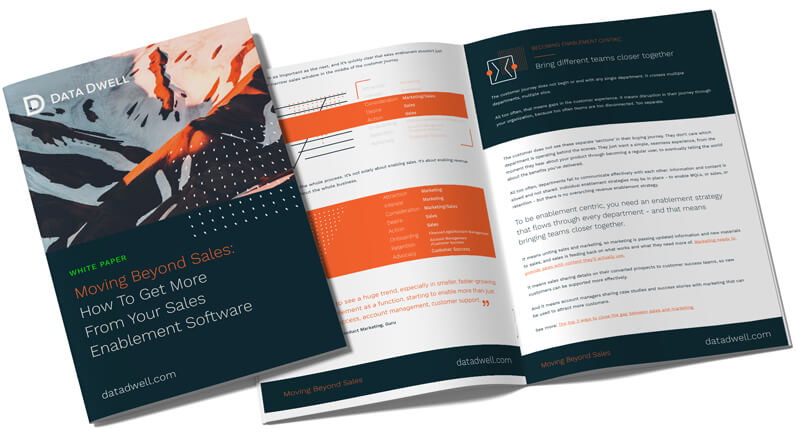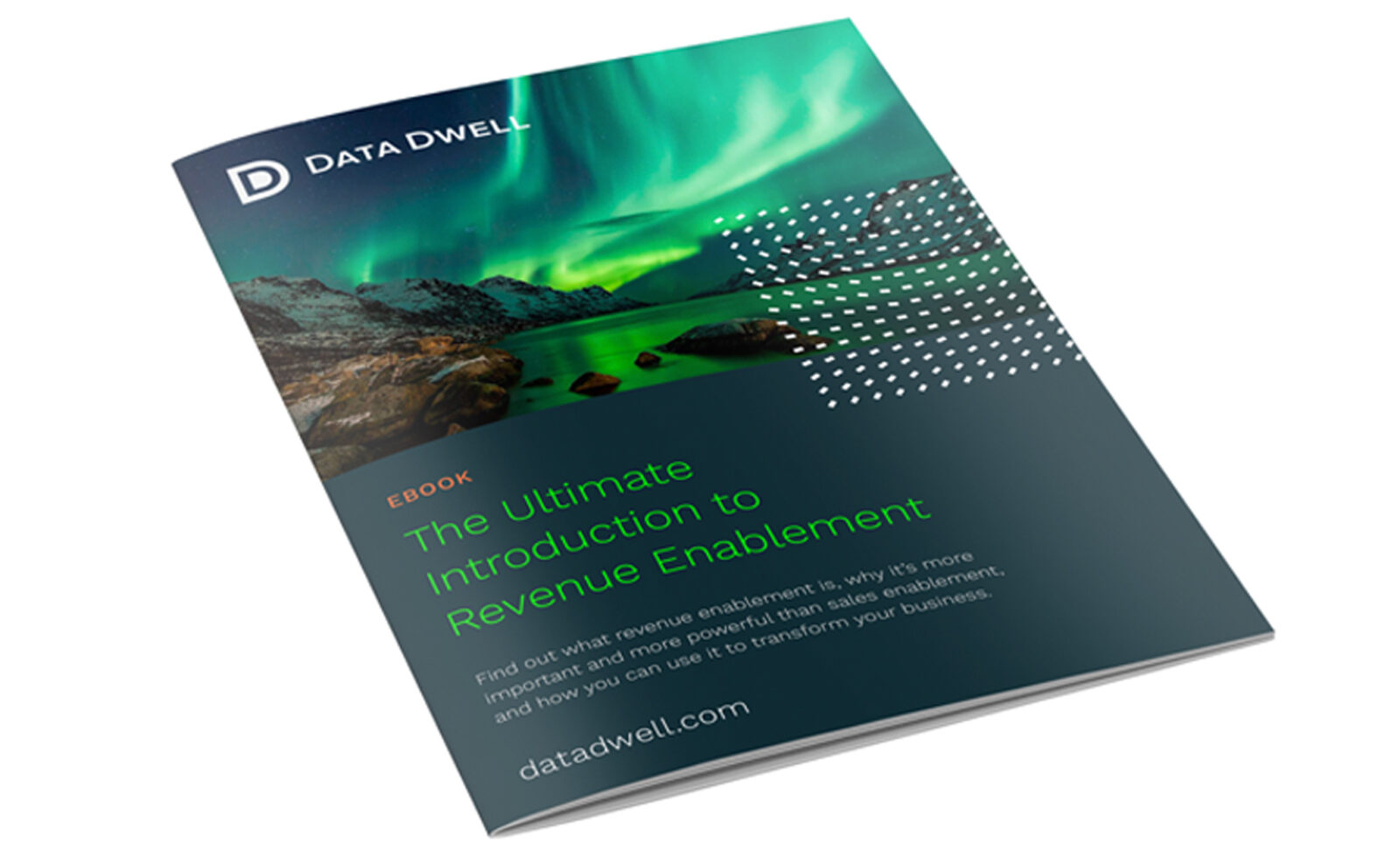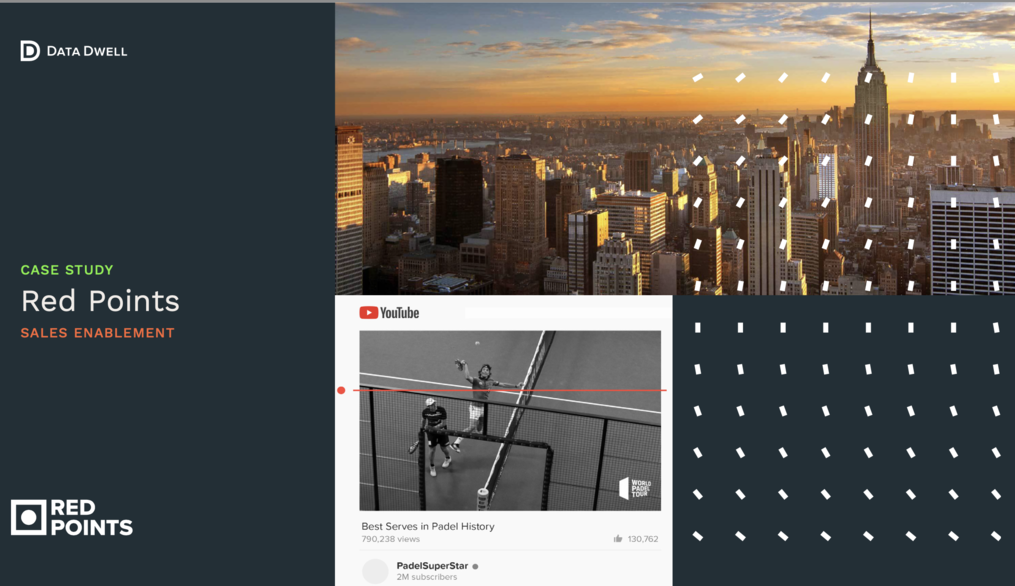
Sometimes, terminology can be confusing. Sometimes you’ll hear or see two different terms for something that seems like it’s only one process.
Like the sales funnel. Or the customer journey.
On the face of it, they seem like the same process. The process of taking a prospect, a lead, someone who’s just becoming aware of your organization’s products and services, and turning them into a paying customer.
One process, two terms.
“Don’t get confused. Because a sales funnel isn’t the whole customer journey. And a customer journey doesn’t end at the bottom of the sales funnel.” Olafur Thorkelsson, Data Dwell CEO
What’s the difference? It’s all about what happens after the purchase.
A sales funnel takes your prospect from awareness to purchase
Your sales funnel is a simple four step process that guides prospects through four separate stages. Awareness, consideration and conversion.
● Awareness is the top of the funnel. This is where your prospects learn the broad strokes of who you are and what your organization does. Whether it’s through PR outreach, print or media advertising, or even word of mouth, this stage is all about making your potential audience aware of your offer.
● Interest is the second stage of the sales funnel, where your prospects start to learn more about how your products could potentially solve the problems they face. It’s about identifying with their challenges through ebooks, white papers and articles.
● Consideration is where you fuel that interest with the facts and information that will inform your prospects’ purchasing decision. This is where they’ll receive the emails, blog posts, reviews and guides that help them make an informed decision. The important factual information (and emotional persuasion) that moves them onto the final stage.
● Conversion is where you turn that awareness and interest, informed by consideration, into a sale. Whether it’s through an online store, an ecommerce platform, a telesales order or a bricks-and-mortar shop, conversion is where your prospect becomes a customer.
And that’s where the sales funnel ends. You’ve generated revenue, and created a new customer. But as you know, that isn’t the end of your relationship with your customers. For that, you need to think beyond the conversion.
For that, you need a customer journey.
A customer journey goes past the point of purchase
“It’s easier to retain a customer and win repeat business than it is to turn a brand new unqualified lead into a customer. That’s a fact of business all over the world.” Olafur Thorkelsson, Data Dwell CEO
By going beyond the sales funnel and into a full customer journey, you can increase the revenue generated by customers who’ve already made a purchase. Because the customer journey includes two additional, very important steps:
● Retention comes directly after conversion. It’s where you increase your customer’s knowledge and sense of brand loyalty to keep them coming back to you instead of looking for an alternative. Whether it’s through FAQs, user guides and a knowledge base, or through aftersales care, this step keeps your converted customers engaged.
● Advocacy is the final stage of the customer journey. Where your retained, loyal customers start to spread awareness of your organization, attracting more prospects to the start of their own journeys. By giving them the tools and information needed to talk about your products and services, you can turn your customers into an ad-hoc sales team, boosting your own lead generation efforts and generating even more interest.
The difference between a customer journey and a sales funnel is much deeper than two extra steps. Because retention and advocacy can be hugely profitable stages of the journey for your organization, the difference between the two terms is one of revenue.
“The difference between a customer journey and a sales funnel is revenue. A customer journey will generate more revenue than a sales funnel. Sustainable, long term revenue that powers growth and sustains success.” Olafur Thorkelsson, Data Dwell CEO
If you’re serious about growing your organization, about going beyond sales and improving retention or even creating brand advocates, you’ll need to let go of the sales funnel and embrace a full customer journey.
And for that, you’ll want to choose a sales enablement software provider that goes far beyond the sales funnel. That can streamline and simplify every step on that longer, but more rewarding customer journey.




